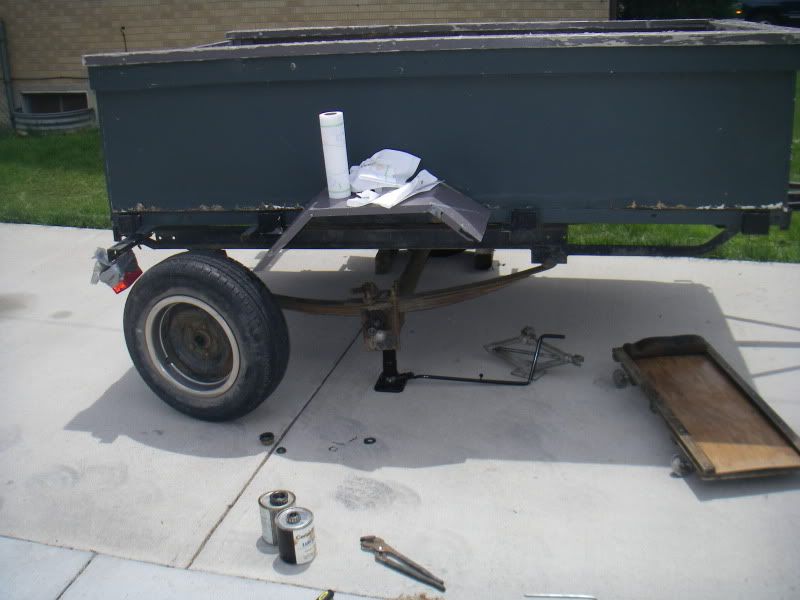
axle capicity?
10 posts
• Page 1 of 1
axle capicity?
How can I tell how much weight my axle can handle? I'm stripping down an old utility trailer and I don't know how much weight I can get away with. I'm not planning on getting to carried away, maby #1200 ish? I don't know. Here's the best pic I've got of the axle.


- Hunterbug
- Teardrop Builder
- Posts: 25
- Joined: Tue May 26, 2009 12:30 am
- Location: Where the buffalo roam and the deer and the antelope play, Colorado.
The weight rating of axles is normally determined by the thickness, read diameter in your case. Measure it and find a manufacturer web page and that will tell you. By looking at your pic I would hazard a guess of around 2500 pounds.
Cheers
Paul
Cheers
Paul

Time is the only real capital we have. Money you can replace but time you cannot.
-

PaulC - 3rd Teardrop Club
- Posts: 4439
- Images: 36
- Joined: Mon May 24, 2004 7:27 am
- Location: Laura, SouthernFlinders Ranges, South Australia



